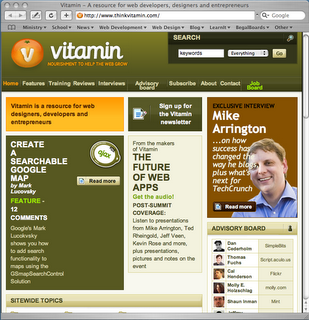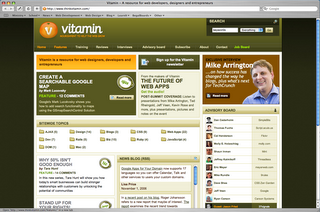Moo.fx 2

In my previous post I talked about Animator.js. Looks like Moo.fx didn't want to be out done. They recently released a completely new version of Moo.fx, a "superlightweight, ultratiny, megasmall javascript effects library". At this point, Scriptaculous is going to have to do something pretty quick to get me to stay on board. This is simply because both Animator.js and Moo.fx now enable me to create any imaginable effect simply be inputting some CSS – to me that is a killer feature.





 Thoughts, developments, and updates
Thoughts, developments, and updates